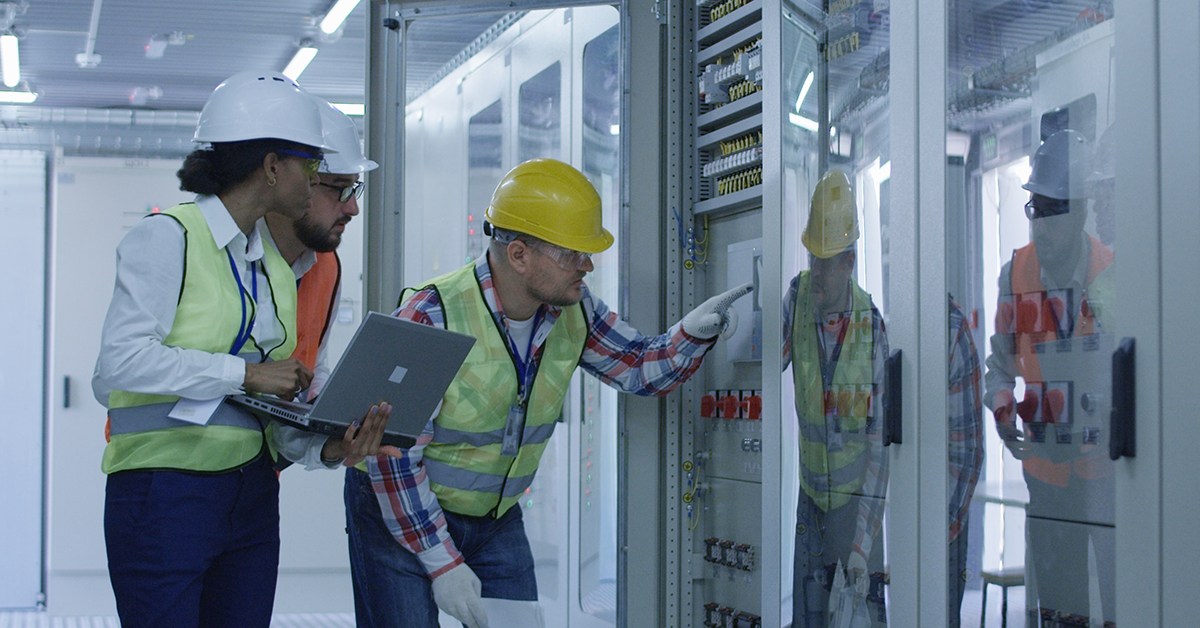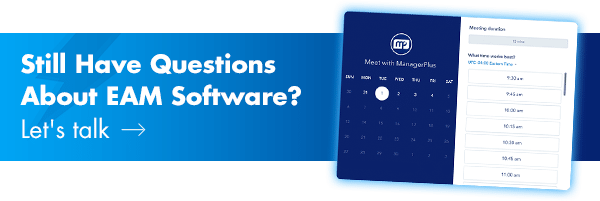How prepared are you for the future of your industry?
Much like many other industries, asset maintenance is constantly changing and evolving. New technologies are being developed and best practices are changing as experts learn more about how to improve the productivity of assets and equipment.
As a maintenance and reliability professional, it’s vital that you are up to date on the latest changes happening in your industry. Obtaining a CMRP certification is a great place to start.
What is the CMRP certification?
The Certified Maintenance & Reliability Professional (CMRP) certification is a credential that demonstrates the recipient has the knowledge, skills, and experience necessary to excel as a physical asset management professional.
It is the main certification program for the industry and demonstrates a mastery of the theories and practices of asset reliability and maintenance management.
The certification program is developed and overseen by the Society for Maintenance & Reliability Professionals (SMRP) which is one of the most respected professional organizations in the industry. The CMRP credential is also accredited by the American National Standards Institute (ANSI) which is the same group that publishes the ANSI maintenance and reliability standards for the industry.
The CMRP exam is, in fact, the only professional exam accredited by ANSI. Obtaining a CMRP certificate shows other professionals in the industry that you are proficient in the latest quality standards and best practices.
What information is covered on the CMRP exam?
Just like back in your school days (you remember back that far?), to do well on an exam, you need to know what’s on it.
The SMRP has established five pillars as part of their Body of Knowledge for the industry which is covered as part of the CMRP exam. They are:
- Business Management
- Manufacturing Process Reliability
- Equipment Reliability
- Organization and Leadership
- Work Management
Let’s break these down a bit more to discover what they’re about.

Business Management
This competency tests your ability to translate your organization’s business goals into goals for maintenance and reliability that help the company succeed.
Manufacturing Process Reliability
For this pillar, candidates need to demonstrate the ability to ideate and implement maintenance and reliability activities that improve the manufacturing processes of their organization.
Equipment Reliability
The equipment reliability pillar is composed of two parts. The first tests your ability to assess the current capabilities of your organization’s assets and equipment in terms of their reliability, availability, maintainability, and criticality. The second part tests your ability to select and implement the most appropriate maintenance practices for your equipment and assets that keep them running in the safest and most cost-effective manner possible.
Organization and Leadership
This pillar is all about assessing your ability to lead and support the maintenance team. You’ll need to know how to identify qualified technicians and assign tasks to them efficiently to help your organization achieve its maintenance and reliability goals.
Work Management
The final pillar for CMRP certification is all about how well you can manage maintenance tasks for your organization. This includes scheduling and planning maintenance activities, following up on tasks to ensure they’re done correctly, and managing stock and inventory.
What are the benefits of the CMRP?
Obtaining a CMRP certification carries with it a range of benefits and advantages for your professional career. First and foremost, it demonstrates to your colleagues, supervisors, managers, and everyone else in the industry that you are a well-trained and highly competent maintenance and reliability professional.
There are other benefits to having a CMRP certification as well. If you’re looking to move up in your organization, obtaining a CMRP credential proves to your superiors that you are dedicated and willing to learn. Good managers are always looking out for workers who are eager to improve their skills.
For maintenance managers, having technicians on your staff with CMRP certification means you can be confident that your team has the skills they need to do their job well. It also makes the hiring process easier. As you’re weeding through a stack of resumes, looking for the CMRP credential helps you quickly find well-qualified candidates.
You can also use the CMRP exam as a knowledge check for your current team to help them develop a better understanding of maintenance and reliability practices. The SMRP offers a library of related educational materials that can help techs learn and grow, and departments can help facilitate study groups to grow the department’s collective expertise.
As a technician, taking the CMRP is also a great way to test your knowledge of the industry. Preparing for the exam will help you discover gaps in your knowledge and catch up on any new best practices that have come about in recent years.

What are the differences between the CMRP and the CRE?
Both the CMRP and the Certified Reliability Engineer (CRE) may sound quite similar (and, in fact, they are), but there are some key differences that mainly come down to the different objectives of the two credentials. The CMRP is more of a high-level overview of maintenance and reliability while the CRE is more focused on prediction and performance evaluation of assets.
The CRE exam tests things like:
- Overall understanding of reliability engineering
- Measuring times to failure using the right distribution
- Analyzing reliability of repairable and non-reparable systems
Both exams are beneficial to anyone in the asset management industry, but the CRE is a bit more specific of a credential and is probably better suited for those who are a little farther along in their career, particularly if you don’t already have the CMRP.
For those earlier on in their career, the CMRP is a great place to start building your knowledge. That being said, there’s no reason you can’t do both.
What’s the best way to prepare for the CMRP exam?
As with any exam, you need to prepare well for it to set yourself up well for success. Thankfully, there are many great resources available from the SMRP and others that will help you prepare. They have a large library of knowledge along with a range of professional development webinars for you to browse and study up.
There’s even an app with 200 technical questions to help you prepare. With CMRP Study Quiz will help you plug any gaps in your knowledge and get a better understanding of the material that will be asked on the exam. The first two versions of the app cost a little money but they have more questions than the free version.
Executive summary
The CMRP exam is a professional certification and credential for the asset maintenance and management profession. The exam is accredited by the ANSI standards body and is overseen by the SMRP. The exam covers the five pillars of knowledge identified by the SMRP: business management, manufacturing process reliability, equipment reliability, organization & leadership, and work management. There are many benefits from obtaining the CMRP credential:
- Demonstrates competency
- Helps to identify qualified technicians
- Fill knowledge gaps
- Prepare professionals for the future
The CMRP is a more wide-reaching exam than the CRE and is better for a more generalized overview of the industry. You can take advantage of many good resources available from the SMRP to help you prepare for the exam.
Next steps
Learning more about enterprise asset management (EAM) software can help you learn a lot about best practices for asset maintenance and management. To learn more about EAM software, reach out to schedule a one-on-one call with one of our experts.


